Oklo stock tumbles as Financial Times scrutinizes valuation
This article was written exclusively for Investing.com
- Cattle and hog prices remain low as 2021 starts
- Reason 1. Soybeans sending a signal
- Reason 2. Supply chain disruptions in 2020 leadng to lower stockpiles now
- Reason 3. Demographic trends
During the final quarter of 2020, the grain sector}} of the commodity market posted the most significant gain, rising by 19%. The prices of soybeans, corn, and wheat rose to over six-year highs. From a technical perspective, the commodities that feed the world broke out to the upside.
Grains are essential for human nutrition, but they also feed the animals that wind up in processing plants and on dinner tables worldwide. Beef and pork production depend on animal feeds, which include grains and oilseeds.
Animal protein markets were presented with a unique set of challenges in 2020. Producers or ranchers suffered under the weight of low prices, reflected in the futures markets. Carnivorous consumers saw just the opposite as prices rose, and availabilities declined.
Last year was a period when beef and pork producers and consumers suffered economic hardships. Meanwhile, the global pandemic’s legacy is likely to continue to impact cattle and hog prices in 2021. If the price action in the grain markets is a guide, we could see substantial price appreciation in meat futures over the coming months.
On Tuesday, Jan.12, the US Department of Agriculture released its first World Agricultural Supply and Demand Estimates report of 2021. In the aftermath of the release, grain prices exploded to new and higher highs.
Cattle and hog prices remain low as 2021 starts
Cattle and hog prices have not experienced the bullish price action seen in the grain markets. In January, we are in the heart of the offseason for the demand for meats. Each year’s peak season tends to run from late May through early September as the grilling season is when animal protein consumption tends to increase.

Source, all charts: CQG
The monthly chart of live cattle futures highlights the bearish trend since the 2014 high of $1.71975 per pound. Live cattle have made lower highs and lower lows, with the past bottom coming in April 2020, at 81.45 per pound. Technical resistance stands at the January 2020 peak at $1.2755 per pound. A move above that level would end the over six-year bear market in the live cattle futures market. Live cattle were below $1.13 on the nearby futures contract at the end of last week.
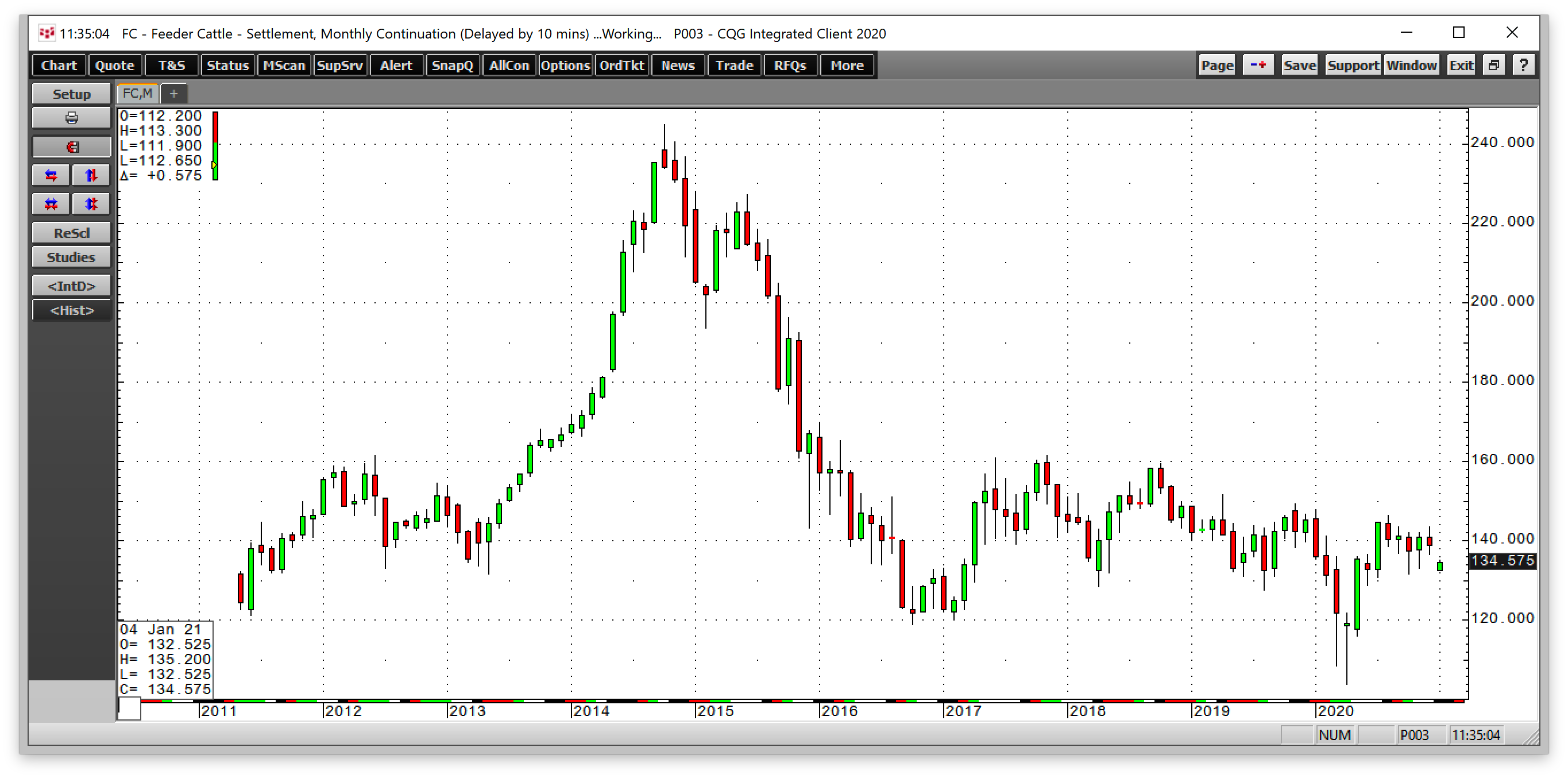
The monthly feeder cattle futures chart shows that they reached a high of $2.4480 in 2014. The spike low in April 2020 at $1.0395 came on the back of the global pandemic. Since then, the feeder cattle price recovered, but a move over the $1.4640 and $1.4940 levels is necessary to end the bearish price trend since 2014. Nearby feeder cattle futures were trading below the $1.35 level on Jan. 15.

As the monthly lean hog futures chart illustrates, at below 70 cents per pound, pork futures recovered from an eighteen-year low of 37 cents in April. A move above the 80 and 94 cents levels is necessary to end the technical pressure in the lean hog futures arena. Hogs closed just over 68 cents last Friday.
Three reasons lead me to believe that we will see beef and pork prices break to the upside in 2021.
1. Soybeans sending a signal
The primary input in raising animals for meat is feed. The price of animal feed has been skyrocketing since mid-2020.

The monthly soybean futures chart shows that the oilseed price rose from a low of $8.0825 per bushel in April 2020 to over $14 as of the end of last week. Soybeans traded to the highest level since June 2014 in early January. Soybean meal is a primary ingredient in animal feed.
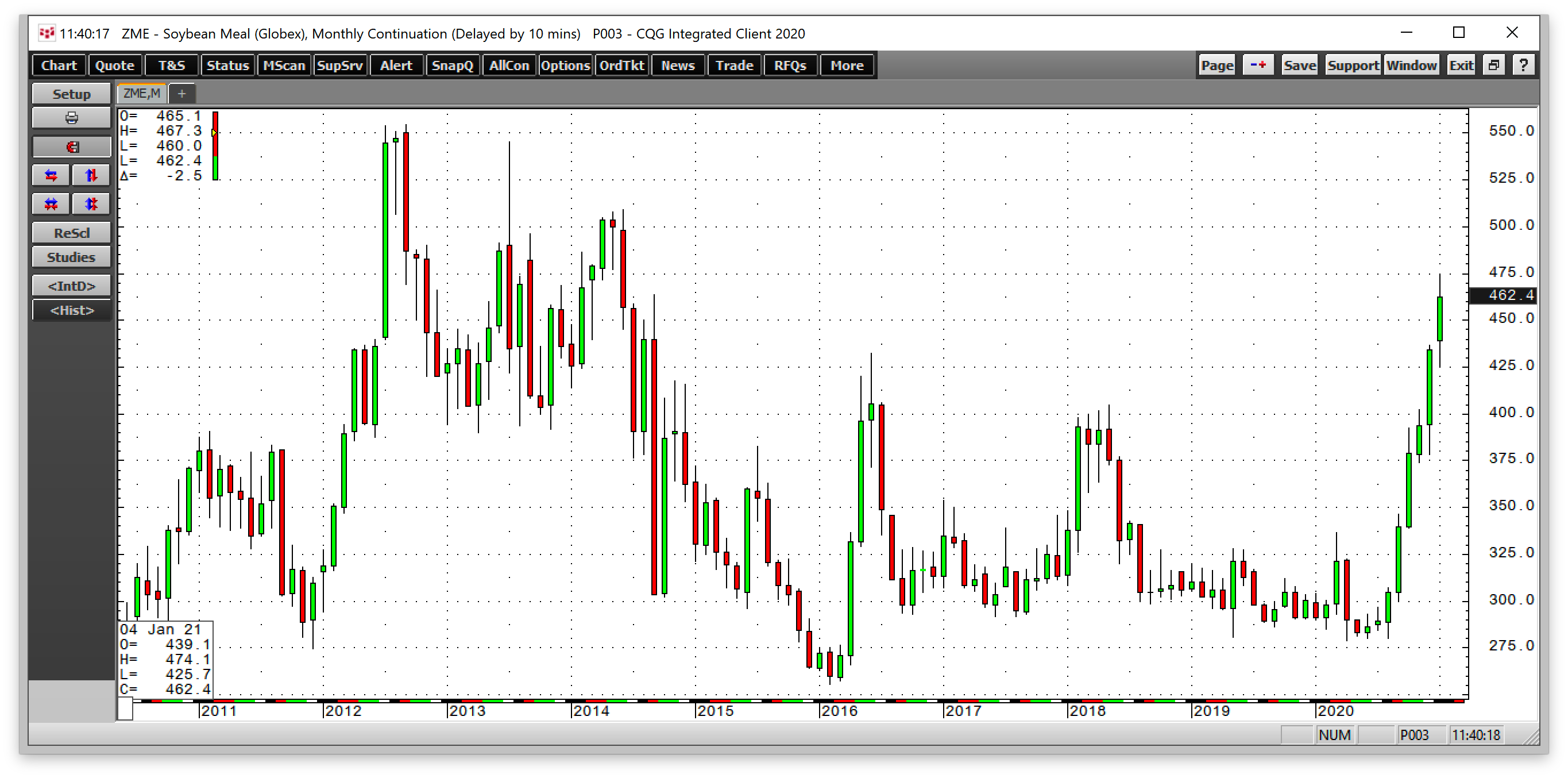
Soybean meal futures rose from $278.80 in April to over the $460 per ton level last week. Corn is another ingredient in animal feed.
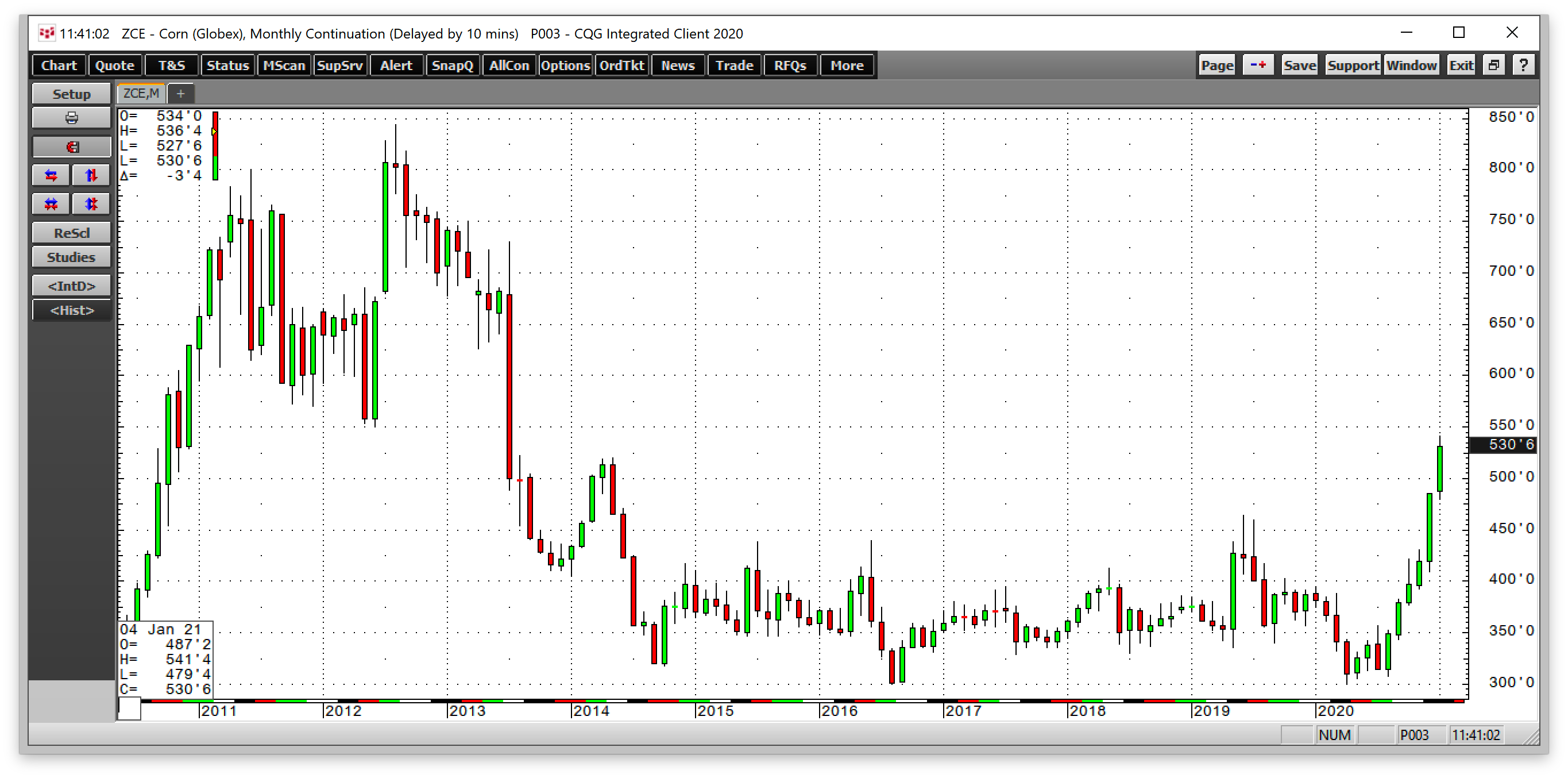
The monthly corn futures chart shows the price explosion from the $3 per bushel level in April to the highest price since July 2013 at over $5.40 per bushel last week.
Rising input prices tend to cause the price of a commodity to accelerate. Animal protein producers face sky-high feed prices going into the 2021 peak season for meat demand.
2. Supply chain disruptions in 2020 leading to lower stockpiles now
In 2020, slowdowns and shutdowns at processing plants because of the global pandemic created low prices for ranchers and high prices for consumers. Ranchers were stuck with animals as processing plants closed. After suffering economic harm in 2020, and in the face of far higher feed prices in 2021, ranchers are likely to cut back on production. Meanwhile, high grain prices will lead to deliveries to processing plants at lighter weights, pressuring supplies.
By the time the grilling season rolls around in late May, and during the summer months, vaccines will create herd immunity to COVID-19. More gatherings, parties, barbecues, and other events during the summer of 2021 compared to 2020 will increase meat demand. The disruptions in the supply chain in 2020, rising grain prices, and a return to some normalcy later this year could create a perfect bullish storm for cattle and hog prices.
3. Demographic trends
Finally, demographic trends continue to underpin the demand for all commodities, and meats are no exception. At the turn of this century, six billion people inhabited our planet. Twenty-one years later, the US Census Bureau reports the number stands over 28.9% higher at 7.736 billion.
A substantial percentage of the population are carnivorous. Demographics continue to put upward pressure on the demand side of meat’s fundamental equation. While the price trend over the past six years has been bearish, it has been just the opposite over the past two decades.
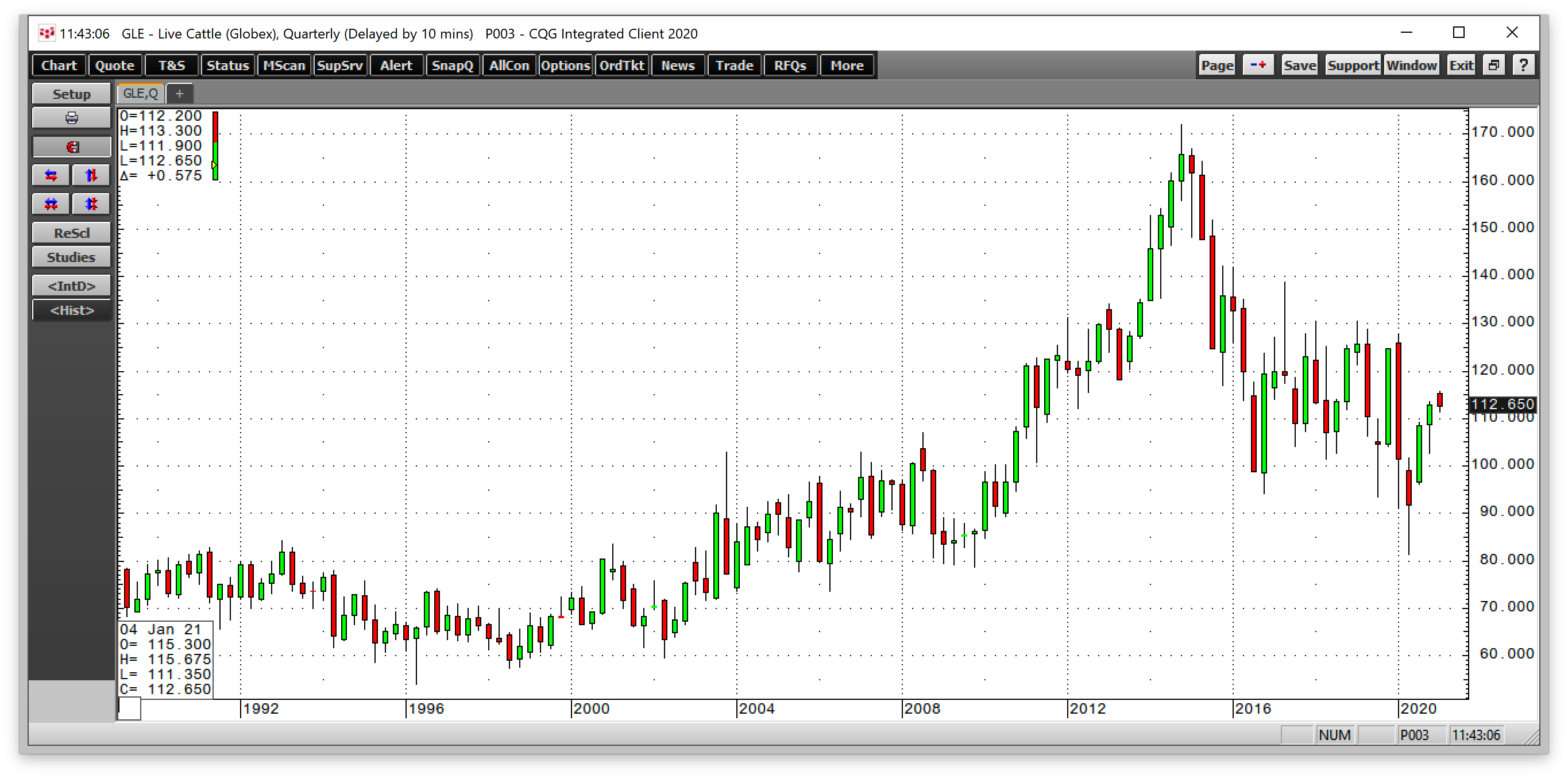
The quarterly chart shows the overall bullish price pattern in the live cattle market from 2000 through 2014. Since then, the price of beef has been mostly in a consolidation pattern.
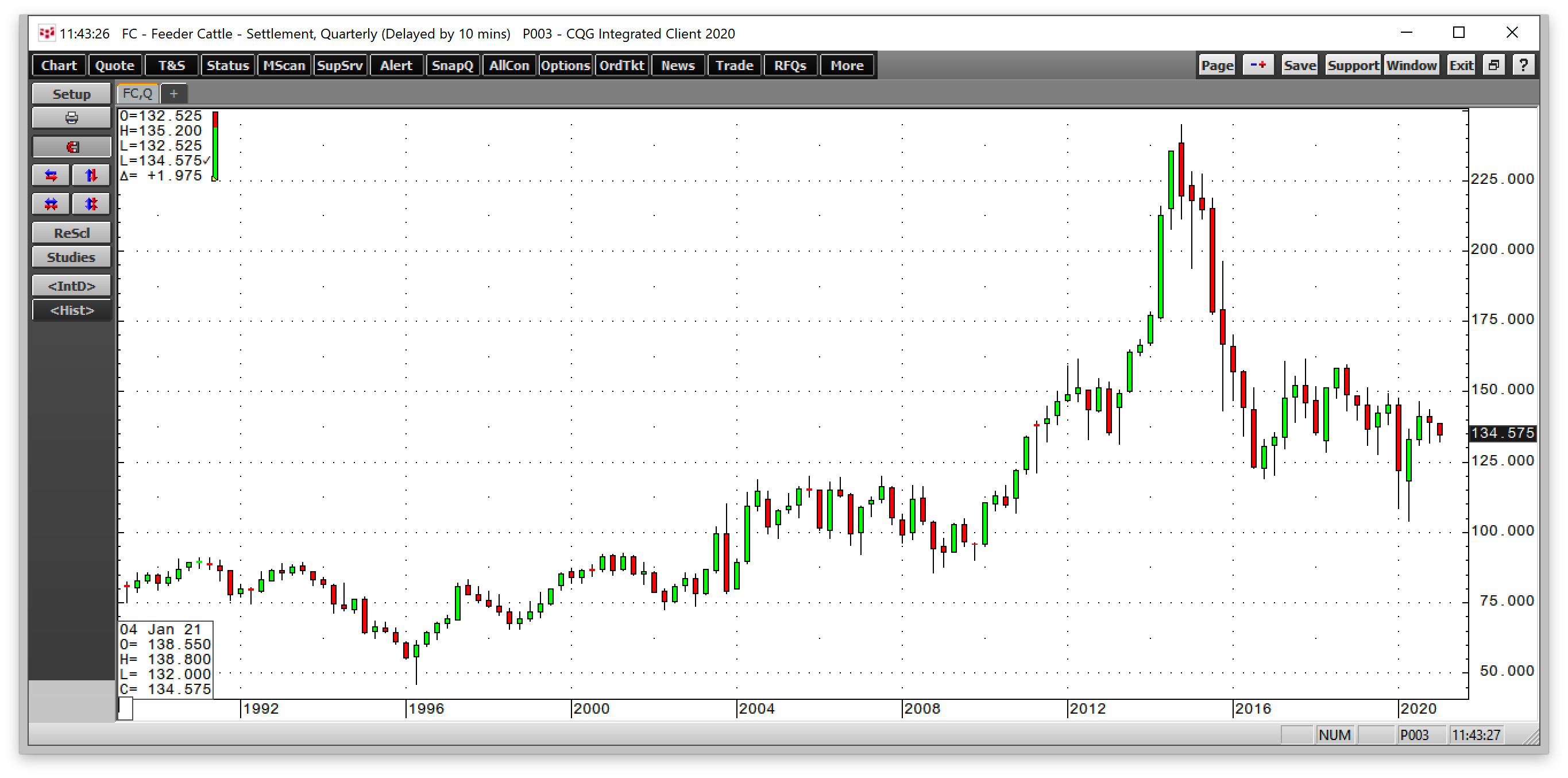
The quarterly pattern in feeder cattle futures displays the same pattern with a mostly higher base price during corrections.
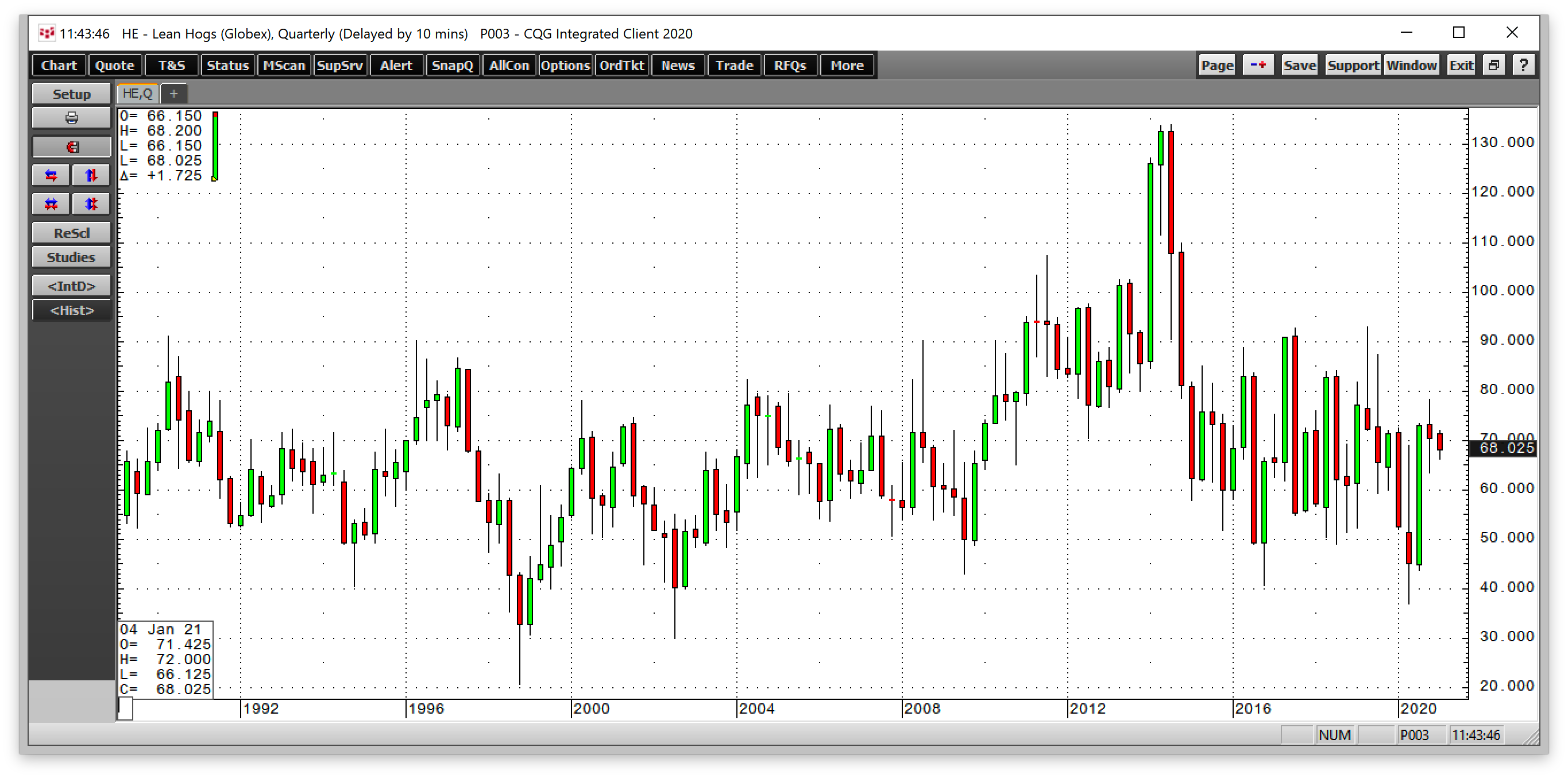
Lean hog prices have mostly consolidated over the past six years on the quarterly chart. The demographic impact on the meat futures markets over the past two decades has been mostly bullish.
If the grain arena’s price action is a sign, we should expect cattle and hog prices to break out to the upside sooner rather than later.
The most direct route for a risk position in the meats is via the futures offered on the Chicago Mercantile Exchange. The iPath® Series B Bloomberg Livestock Subindex Total Return ETN (NYSE:{{1155647|COW) should follow meat prices higher or lower over the coming months.
